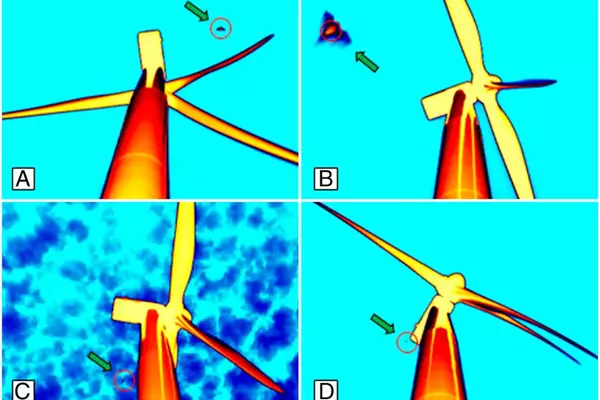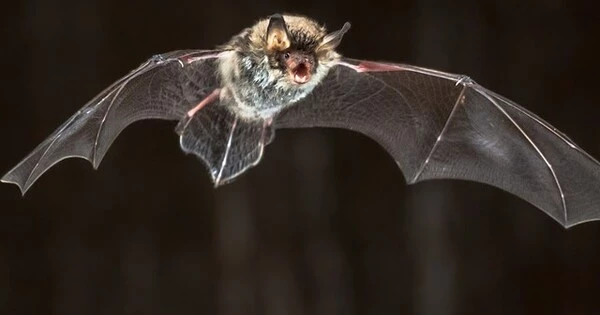As more wind turbines (WTs) are installed as part of the energy transition and distance regulations to human settlements tighten, suitable locations become increasingly difficult to find. As a result, wind turbines are increasingly being installed in forests, much to the chagrin of forest specialists such as bats. A team of scientists led by the Leibniz Institute for Zoo and Wildlife Research (Leibniz-IZW) demonstrated in a new study that forest specialists among bats, which forage below the treetop and thus have a lower risk of colliding with turbines, avoid wind turbines.
The team concludes in a paper published in the Journal of Applied Ecology that forest sites should either not be used for wind turbines at all, or only in exceptional cases with mandated compensatory measures to protect forest bats.
Wind turbines are being installed at an increasing rate around the world in order to meet the goals of national climate strategies. Approximately 30,000 onshore wind turbines are currently in operation in Germany. However, the open areas near towns and villages where wind turbines are tolerated are limited. As a result, wind turbines are increasingly being installed in forests.
Wind turbines in forests can harm bats in a variety of ways. Bats that hunt for insects above the treetops can be killed by turbines if they collide with the rotor blades or do not survive the intense air pressure differences near the blades. Bats that hunt in the vegetation beneath the treetops lose some of their habitat as a result of clearings.
Dr. Christian Voigt
“Forests are sensitive ecosystems that provide valuable habitat for many rare and endangered bat species,” says Dr. Christian Voigt, Head of the Department of Evolutionary Ecology at Leibniz-IZW. “Wind turbines in forests can harm bats in a variety of ways. Bats that hunt for insects above the treetops can be killed by turbines if they collide with the rotor blades or do not survive the intense air pressure differences near the blades. Bats that hunt in the vegetation beneath the treetops lose some of their habitat as a result of clearings.” Their habitat may also deteriorate in the vicinity of wind turbines and clearings if they are disturbed by turbine operation.
Together with colleagues from Phillips-Universität Marburg and Kiel University, Voigt and his student primarily looked at those bats that forage below the treetop in the shelter of the vegetation. To do this, they monitored the activity of bats using ultrasound detectors at different distances from the wind turbines at 24 forest sites in Hessen.

The scientists classified the recorded calls into three groups of bats. Firstly, those that forage in open areas (e.g. above the treetops), secondly, the species that hunt at edge structures, and thirdly, the specialists for foraging in narrow spaces, for example forest specialists below the canopy such as the bats of the genera mouse-eared bats (Myotis) or long-eared bats (Plecotus).
“These forest specialists were significantly less active close to wind turbines, especially near turbines with large rotors, and during midsummer months,” says Voigt. Starting from a distance of 450 meters towards wind turbines, the activity of these bats dropped by almost 50 percent close to the turbines.
Wind turbines at forest sites thus not only pose a direct threat to bats that hunt for insects above the treetops, but they also degrade the habitat of bats that live below the treetops and hunt for insects there. “Even though forest specialists are not at risk of colliding with turbines, they are still suffering from wind turbines in forests due to habitat loss because they avoid operating wind turbines over several hundred meters,” Voigt concludes.
As a result, the authors recommend that wind turbines be sited in the open landscape rather than inside forests, and that near-natural forests with a diverse vegetation structure be avoided. If wind turbines must be built in forests, compensatory measures are required. A critical component of these mandated compensatory measures should be the designation of an appropriately large area of forest as a wilderness area for forest specialist bats, in order to compensate for the loss of habitat caused by turbine operation.





